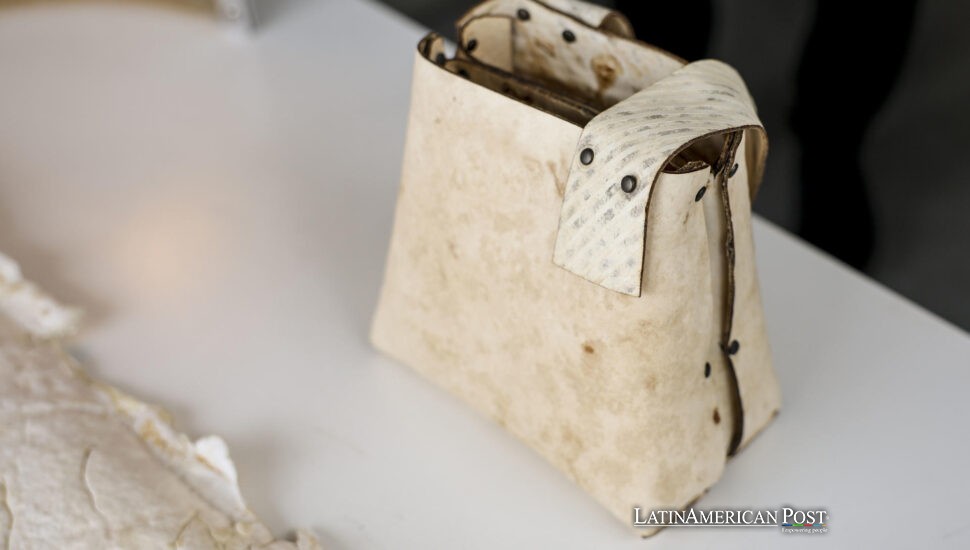Latin America Weighs Fungal Leather Threat to Cattle Dominance

Supervisors still salt cowhides the old way in tanneries from São Paulo to Salto. But a silent rival is germinating in steel tanks: mycelium “leather.” If lab-grown mushroom skins win the next fashion cycle, Latin America’s cattle heartland must reinvent itself on the fly.
From Pasture Kings to Petri-Dish Challengers
For generations, the math felt eternal. You raised a steer, sold the meat, and the hide—once a by-product—traveled to Italy or Detroit to be reborn as handbags and car seats. Brazil alone tanned thirty-five million skins last year, a flow worth nearly US$1.4 billion. Across the Río de la Plata, Uruguay and Argentina balanced entire rural economies on the extra dollars leather fetched beyond beef.
Then, a Belgian lab invited a fungus called reishi to dinner. Bio-engineer Anouk Verstuyft told EFE she feeds the organism sawdust and corn husks, watches it weave microscopic filaments into a white quilt, presses that quilt flat, tans it with plant enzymes, and two weeks later holds a sheet that looks—and more impressively, smells—like calfskin straight from León, México. Her design partner, Annah-Ololade Sangosanya, turned the sheet into a chocolate-brown jacket that stole a corner of the spotlight at Milan Design Week. Fashion editors sniffed (literally; the piece carries a faint mushroom note) and tweeted that the future of leather might live in a spore.
The science isn’t new—companies such as Bolt Threads, MycoWorks, and Ecovative have chased the dream for a decade—but the scaling argument is. Investors now wave life-cycle audits that promise up to 90 percent fewer greenhouse emissions than cattle, zero deforestation risk, and water use so tiny it barely registers on a graph. The ecological story writes itself if brands can hit price parity and volume. And that’s what has hidden barons along Brazil’s BR-050 highway nursing acid reflux.
Earthy Aroma, Global Ripples
Leather still rules the balance sheet, but clouds gather. General Motors quietly installed mycelium door panels in a concept EV. Hermès released a one-off mushroom Victoria bag. Adidas flirted with a fungus Stan Smith before supply snags froze the project. Meanwhile, the French parliament is debating a label that would force luxury houses to disclose any link to Amazon clearing.
Latin American analysts sense danger. Santiago Brufau, an Argentine trade consultant, warns that if European elites decide a mushroom purse telegraphs status and virtue, South American hides could turn from cachet to liability overnight. Not because the world will stop eating beef—population charts say otherwise—but because automakers chasing carbon credits and fashion conglomerates chasing ESG headlines might pay a premium to ditch cowhide altogether.
The numbers leave a little margin. In Paraguay, hide exports buffer razor-thin beef profits. A single tannery can underpin a small town’s tax base in Uruguay. “We already live or die by distant consumer moods,” a Montevideo port agent sighs. “If Milan sniffs mushrooms, our customs shed feels it six months later.”

Turning Waste into A Second Harvest
Yet the same geography that fattens Herefords could feed fungi. Sugarcane bagasse, coffee husks, rice straw—the region piles up mountains of agricultural refuse yearly. Researchers at UNAM in México City discovered that native oyster mushrooms thrive on corn stover from Sonora fields. In Campinas, Brazil, the university spin-off FungoPlast cultivates packaging foam from reishi and sells it to electronics exporters tired of Styrofoam tariffs.
Chile hosts startups Sporatex and Spora Biotech, crafting vegan sneakers from local mycelia. Buenos Aires incubator Somos Mosh hopes to supply handbag panels to regional designer houses starved for eco credentials. The feedstock is almost free; the know-how arrives in PDFs. All that’s missing, entrepreneurs say, are the subsidies governments already lavish on soybean monoculture and ethanol distilleries. “Give us one percent of the support corn receives,” quips a Mexican mycologist, “and we’ll buy half the tanneries you worry about.”
Forward-looking tanners are hedging. The Paraguayan firm CueroFlex has begun blending shaved cow fibers with mushroom sheets to lighten the weight of EV interiors. An Uruguayan cooperative is courting German biochemists to retrofit chrome drums for enzyme tanning that works on hides and fungi: tradition and mutation.
The Hybrid Horizon
Nobody expects gaucho culture to vanish. Global leather demand still tops US$400 billion, and a Patagonia steer remains shorthand for the rugged luxury that lab skins must earn. Mycelium faces hurdles—uniform sheet size, finish consistency, and consumer trust. Yet history suggests that disruptive materials eventually claim their market slice; nylon did it to silk, plant-based milk, and dairy.
What counts now is who writes the next chapter. If Latin American governments cling to the past, they risk watching value chains migrate to biotech clusters in California or Bavaria. If they seed pilot factories next to slaughterhouses, the transition could become a both-and story: heritage leather for the purists, mushroom leather for the eco-auditor checking boxes.
Carbon markets may decide. Should Brussels slap a methane tariff on imported hides while Frankfurt bankers offer cheap green bonds to mycelium startups, private capital will sprint toward the spores. The smartest ranchers might respond by installing biodigesters, capturing cow gas for electricity, and co-investing in nearby fungus barns that up-cycle crop waste: one sun, two proteins, countless export SKUs.
Back in Brussels, Anouk Verstuyft seals another tray. In two weeks, it will shed its lab coat and masquerade as calfskin. She likes to imagine its future life—perhaps upholstering a São Paulo tech CEO’s self-driving sedan or hugging the sole of a teenager’s sneaker in Guadalajara. “We are not fighting the cow,” she tells EFE, “just proving another story is possible.”
Also Read: Whispers of Uncertainty Shake Guyana’s Essequibo Businesses
Latin America must decide whether to treat that story as a threat or an invitation. Because fungi do not graze, vote, or strike, they grow where the conditions are right. The pampas and cerrados have long been fertile ground for wealth. A little humidity control, a dash of political vision, and the next boomtown might smell faintly of mushrooms.





